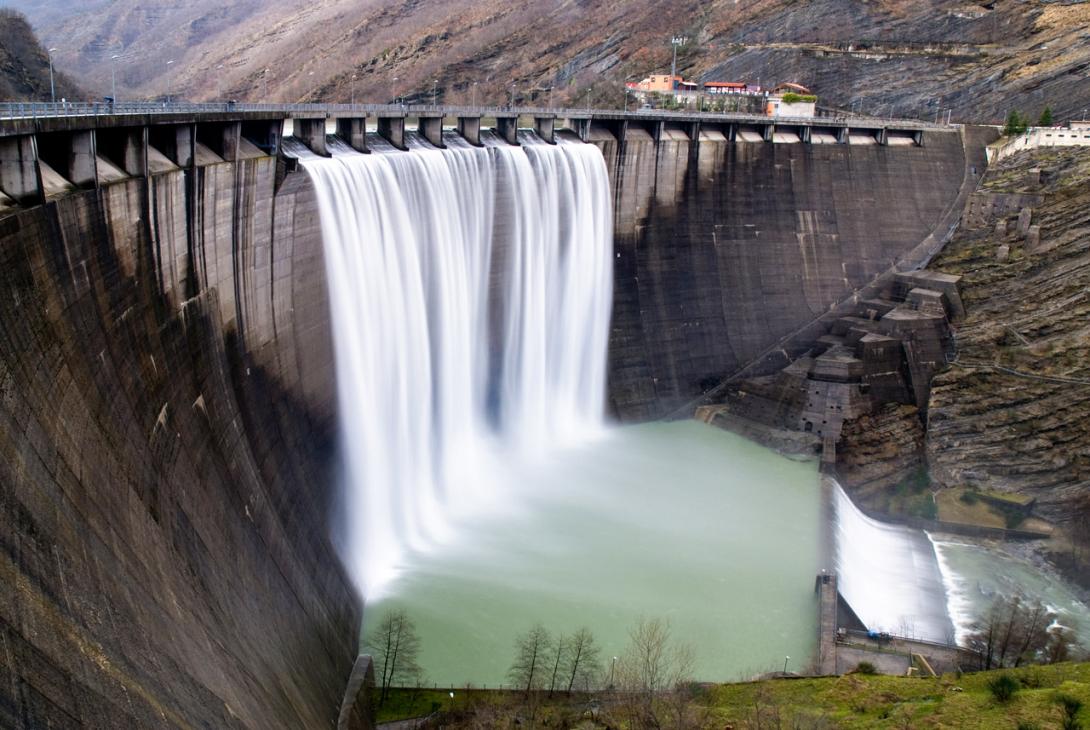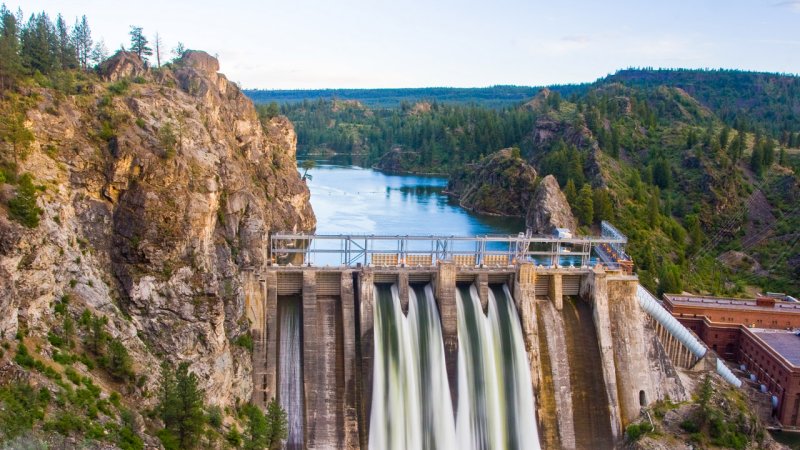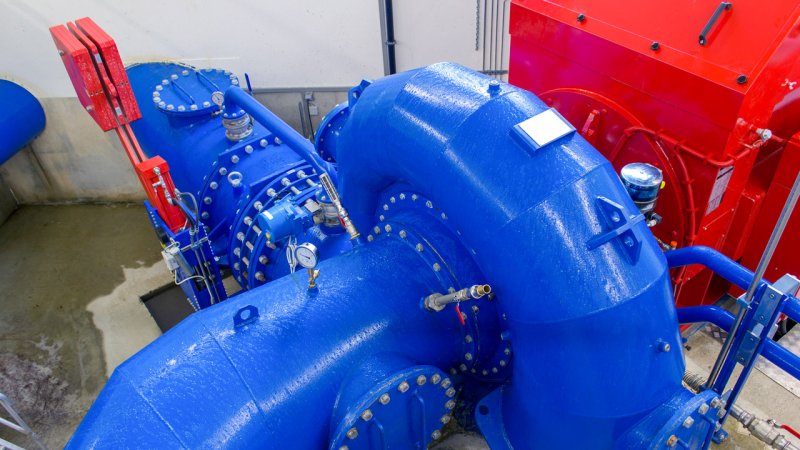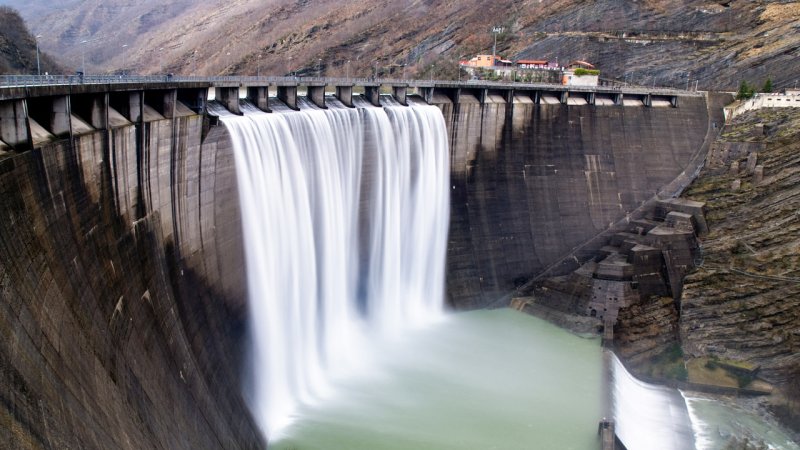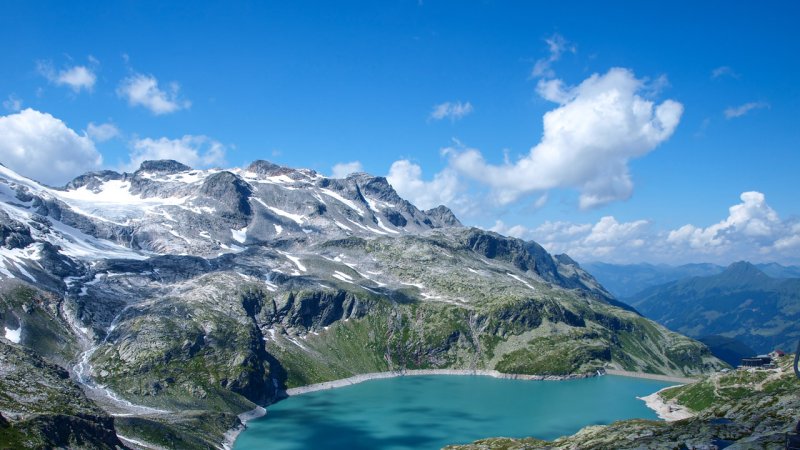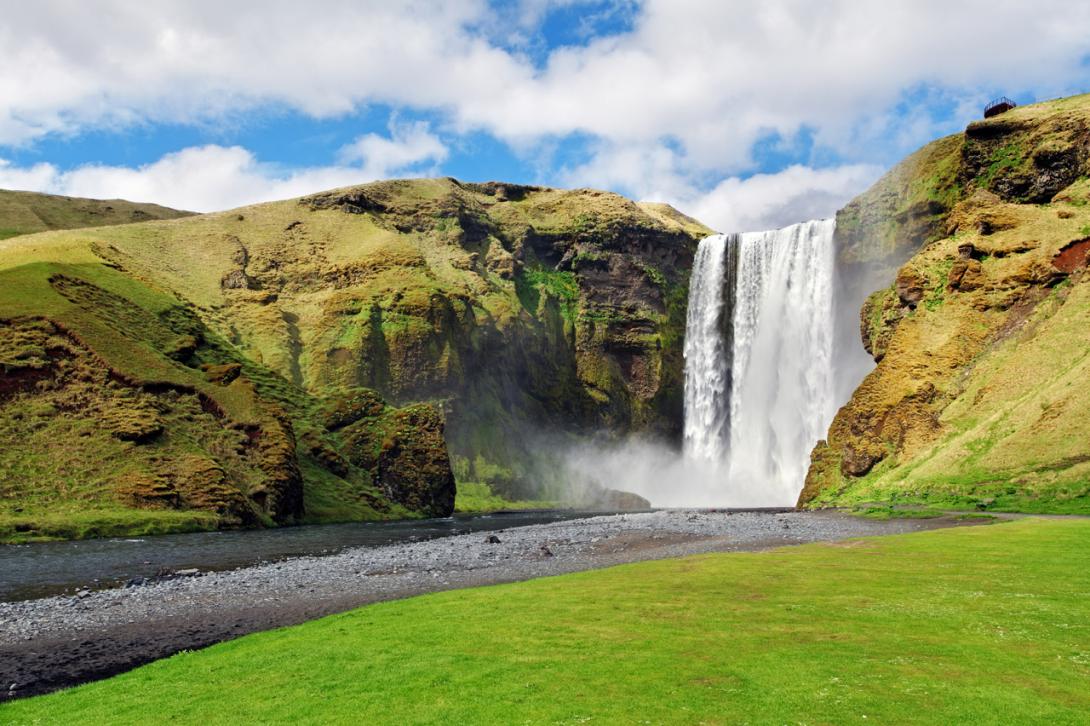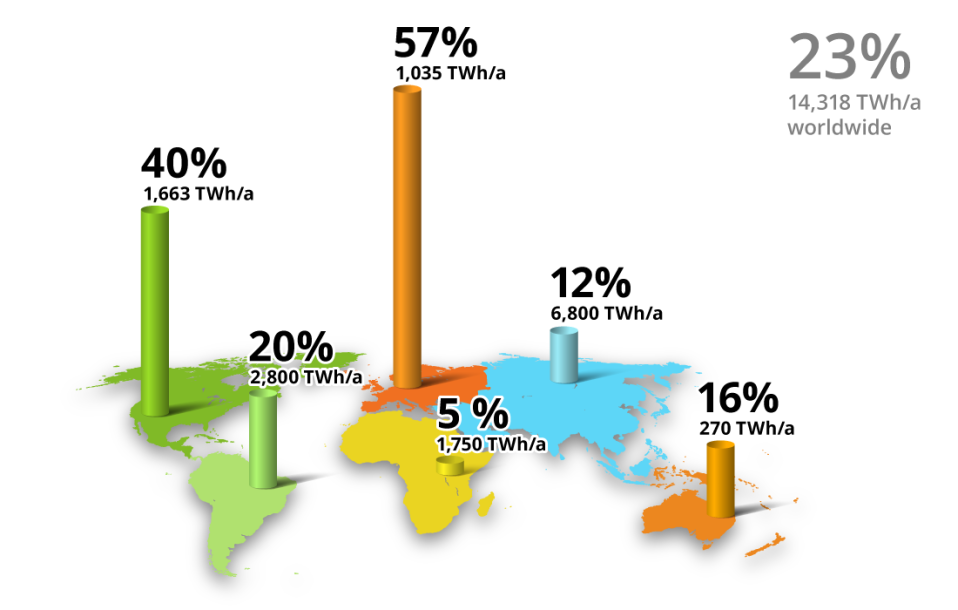
Water Energy and Its Uses
3 min read
The Potential Energy of Water
An artificial waterfall formed by water flowing through spillways over the edge of a dam when the water level is high.
Within the Earth’s field of gravity, water always has some potential (positional) energy. This energy can be converted into another type of energy, e.g. kinetic or pressure energy. Potential energy drives reaction water machines.
Kinetic Energy of Water
The kinetic (motion) energy of water is determined by the speed of the water flow and primarily depends on its hydraulic head. Kinetic energy drives isobaric rotating impulse machines.
Available Water Energy
The amount of generated electric energy in a hydroelectric power plant primarily depends on the hydraulic head and the rate of flow in the turbine. In the course of a year, the head remains more or less the same but the rate of flow can vary up to a tenfold of the basic value.
A hydroelectric power plant harnesses the kinetic energy of a mass of water falling from a given height by capturing the energy in turbines which transform it into electricity. The approximate output of a hydroelectric power plant can be easily calculated using the following formula:
P = ρ × h × r × g × k
where:
| P | is the output in Watt, |
| ρ | is the water density (kg/m3), |
| h | is the head in meters, |
| r | is the rate of flow in cubic meters per second, |
| g | is the gravitational constant = 9.81 m/s2, |
| k | is the efficiency coefficient ranging from 0 to 1. Bigger, more modern turbines are more efficient. |
The annual production of electric energy also depends on fluctuations in the rate of flow throughout the year.
Hydrologic Potential
The hydrologic potential of a geographic region is derived from the theoretical total amount of electric energy that can be produced if all the watercourses in the region in question are harnessed.
An estimate of the hydrologic potential is based on topographic conditions of each individual region and on the precipitation total in the region in question. The theoretically exploitable hydrologic potential is an amount of energy that can be gained from a watercourse or a region if all the precipitation water for the given region would flow through turbines of hydroelectric power plants, whereby the stream head is presumed to go all the way down to sea level.
Technological Potential
Then there is the Technological potential, which only takes into account the part of the total hydrologic potential that we are able to utilize with today’s technology. But for economic reasons not all technologically feasible projects can be realized, and therefore it is necessary to take into account the so-called Economic potential when evaluating the returns of hydroelectric power plant projects.



